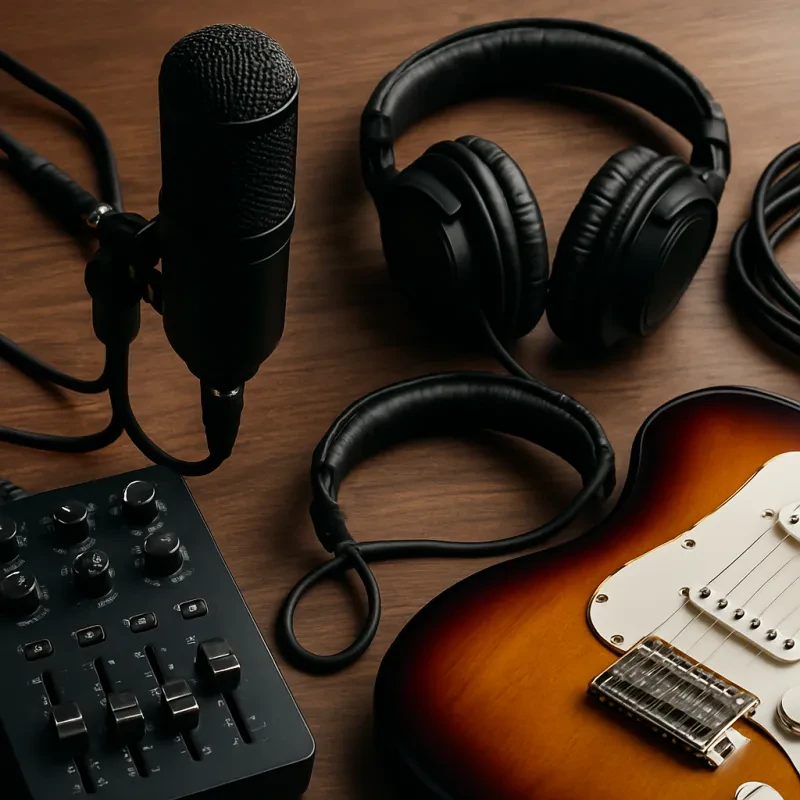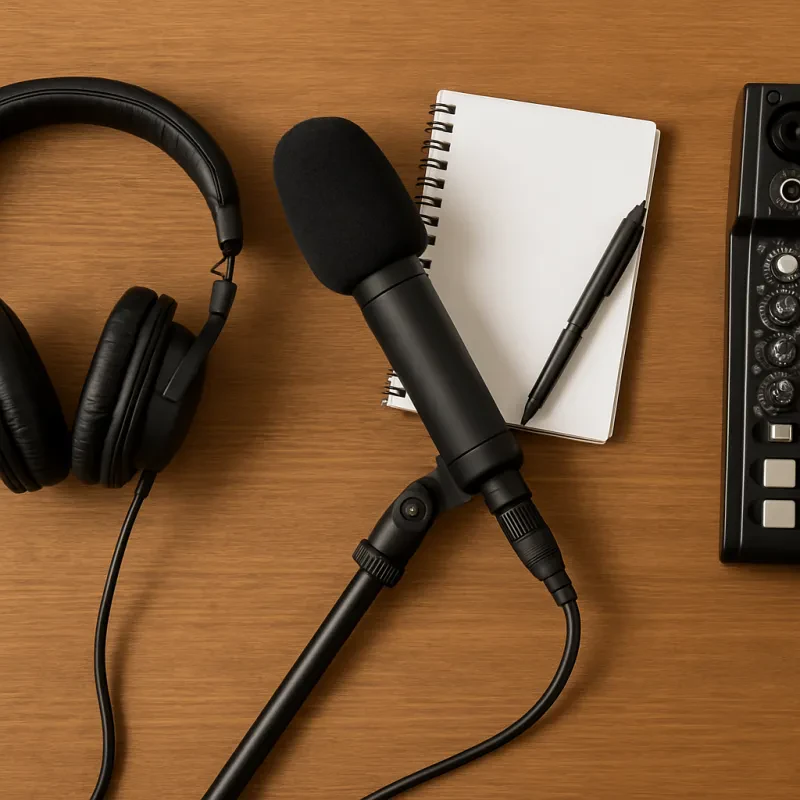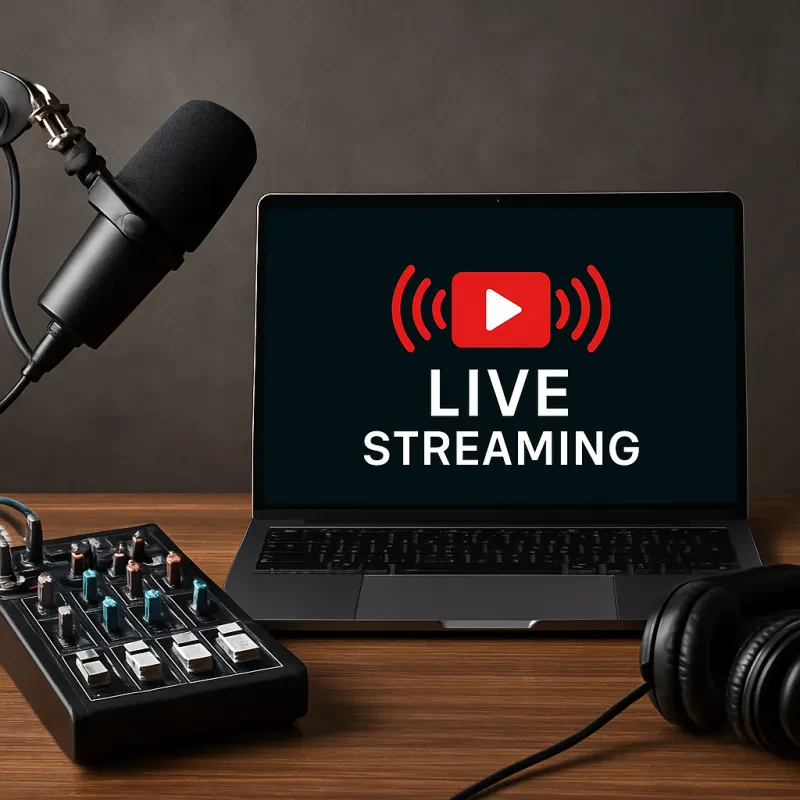When diving into the world of podcasting, one of the first hurdles you may encounter is the array of equipment options available. Understanding the basics of podcast equipment is essential to make informed decisions about what you really need. At the heart of any good podcast setup is a reliable microphone. A quality mic can significantly improve your audio quality, making it crucial for engaging your audience.
In addition to a microphone, you'll want to consider audio interfaces or mixers. These devices help connect your microphone to your recording software, enhancing the sound quality further. While some people may opt for USB microphones that plug directly into a computer, investing in an audio interface can offer more control over your sound and accommodate additional microphones if you decide to expand your podcast in the future.
Once you've figured out your microphones and audio interfaces, don't forget about headphones. A good pair of closed-back headphones is key for monitoring your audio as you record, helping you catch issues on the spot. You'll also want a reliable recording device or software. Many podcasters start with free software options, but as you grow, it might be worth investing in premium software that offers more features and ease of use.
Lastly, consider your acoustic environment. While not equipment in the traditional sense, soundproofing tools like foam panels or portable vocal booths can make a big difference in your audio quality. Understanding these basics will not only prepare you for your podcasting journey but also help you evaluate which equipment will truly enhance your production value.
Analyzing Costs and Benefits
When considering whether to invest in podcast equipment, it's essential to analyze the costs and benefits involved. On one hand, high-quality microphones, headphones, and audio interfaces can strain your budget. On the other hand, investing in better equipment can significantly enhance the production quality of your podcast, making it more appealing to listeners.
The initial costs of podcasting gear can vary widely. A decent microphone can range from $50 to several hundred dollars, while audio interfaces and mixers add to the expense. Additionally, you may want to factor in costs for accessories like pop filters, boom arms, or recording software. It's crucial to set a budget and decide how much quality improvement each piece of equipment will provide you in relation to the cost.
Benefits of investing in quality podcast equipment often include improved audio clarity and a more professional overall sound. Good sound quality can keep listeners engaged and encourage them to share your podcast with others. Moreover, investing in reliable equipment can save you headaches in the long run, reducing the chances of technical difficulties during recording sessions.
Another benefit of higher-quality equipment is the potential for growth. As your podcast gains traction, having the right tools can facilitate collaboration with guests and networks, allowing you to expand your content offerings. By analyzing the upfront costs alongside the long-term benefits, you can make a more informed decision about the worthiness of your podcast investment.
Key Features to Consider
When deciding whether to invest in podcast equipment, it’s essential to focus on specific features that can significantly enhance your recording and production quality. First and foremost, consider the microphone type. Dynamic microphones are popular for beginners due to their durability and ability to reject background noise. However, condenser microphones, while requiring more care, can capture a broader frequency range, making them ideal for vocal clarity and richness.
Next, look at the audio interface. This device connects your microphone to your computer and converts your voice into digital audio. High-quality audio interfaces offer better sound quality and lower latency, allowing for a smoother recording experience. Investing in a reliable audio interface can drastically improve your podcast sound without breaking the bank.
Another critical feature is headphones. Good closed-back headphones allow you to monitor your audio while recording, helping you catch any issues in real time. Look for headphones that are comfortable to wear for long sessions and provide accurate sound reproduction for optimal monitoring.
Lastly, don’t overlook the importance of accessories. A sturdy microphone stand, pop filter, and acoustic treatment for your recording space can significantly enhance your audio quality. These seemingly small investments contribute to creating a professional sound, making them well worth considering for anyone serious about podcasting.
Smart Budgeting for Podcasters
Smart budgeting is crucial for podcasters who want to maximize their return on investment. While high-quality equipment can enhance your audio and overall production value, it's important to differentiate between essential gear and optional upgrades. Start by listing your basic needs, such as a good microphone, headphones, and audio interface. This allows you to create a budget that focuses on what truly matters for your podcast.
Research is key to making informed purchasing decisions. Look for reviews and recommendations for equipment that fits your budget and needs. There are plenty of affordable options that maintain quality, allowing you to spend wisely. Consider purchasing used or refurbished gear, which can significantly lower costs without sacrificing performance. This way, you can allocate more of your funds toward marketing your podcast or creating compelling content.
It's also wise to plan for future expenses. As your podcast grows, you may want to invest in additional equipment or editing software that can further enhance your production value. Having a flexible budget will enable you to adapt to changing needs without putting financial strain on yourself. By keeping your budget in check, you’ll ensure that you’re not just investing in equipment but also building a sustainable podcasting business.
Lastly, consider collaborating with other podcasters or joining communities where you can share resources and knowledge. This can lead to opportunities for equipment sharing or swapping ideas for cost-effective solutions. Networking can provide valuable insights into budget-friendly practices while fostering creativity and collaboration. By being smart and strategic with your budgeting, you’ll ultimately set yourself up for podcasting success.


